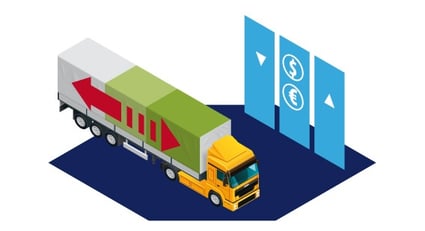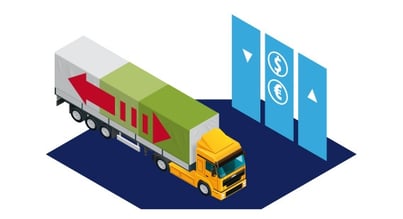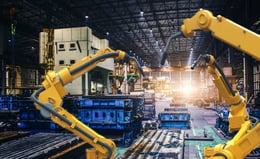5 Uses for Cloud Technology in Manufacturing
Brian Hoey - March 03, 2020

 Though the manufacturing sector has traditionally not been the fastest adopter of cloud technology, there’s no denying that the demand for cloud-based apps and services in the industrial world is increasing. One estimate suggests that the cloud manufacturing market could nearly triple in just a few short years, from just shy of $40 billion in 2018 to more than $110 billion by 2024. Based on the way people talk about cloud technology, it’s easy to see why: it’s often cited among the most important drivers of the Fourth Industrial Revolution, and insiders often suggest that it has the power to revolutionize ERP, power improved demand forecasts, and improve operational visibility.
Though the manufacturing sector has traditionally not been the fastest adopter of cloud technology, there’s no denying that the demand for cloud-based apps and services in the industrial world is increasing. One estimate suggests that the cloud manufacturing market could nearly triple in just a few short years, from just shy of $40 billion in 2018 to more than $110 billion by 2024. Based on the way people talk about cloud technology, it’s easy to see why: it’s often cited among the most important drivers of the Fourth Industrial Revolution, and insiders often suggest that it has the power to revolutionize ERP, power improved demand forecasts, and improve operational visibility.
Of course, with new technology it’s always difficult to separate the hard facts from the hype. Cloud computing as a tool is only as valuable as how you use it—so how can manufacturers use it to its best advantage?
1. Postmodern ERP
Compared to on-premise physical data storage, cloud computing does have a handful of concrete differences. In many sectors, the most important draw for most users is that with a cloud subscription you can pay for the data storage and computing power you actually use, without wasting any money on overhead. This is, of course, applicable to industrial users as well. But what’s even more relevant is how cloud-based services are able to make this happen. By offering users services and infrastructure that are designed with scalability in mind, you give them the flexibility to integrate IT, data flows, and processes more easily. One of the areas where this is most impactful in ERP usage. Right now, it’s easy for manufacturers to fall into the modern ERP “trap,” i.e. implementing top-down ERP software deployments that don’t give individual value chain functions the flexibility to adopt their own tools as needed. This often leads to Shadow IT, which in turn leads to silos, reduced forecast accuracy, and potential disruptions. The antidote to this is Postmodern ERP solutions that can connect disparate touch points and their respective IT. With cloud technology, this is easier than ever to achieve. Why? Because cloud services thrive on decentralized data.
2. Real-time Data Analysis
One of the potential drawbacks of locally-hosted storage and applications is speed—both in terms of computing power and in terms of data velocity. Sure, an in-memory computation via an on-prem application is going to be lightning-fast, but it’s tough to guarantee that the operation itself is being carried out with up-to-the-second data. After all, data entered into disparate parts of the system may take time to be centralized for use by other touchpoints in traditional software environments. Not so in cloud-powered ecosystems. Here, an update in your inventory planning module is reflected immediately in every other part of the system, such that transport planners, e.g., know whether a particular warehouse has enough product on hand to fulfill an order. And because that data is reaching each touch point more quickly, it can also be analyzed more quickly, in order to create smarter, more accurate demand and production forecasts, ultimately resulting in true real-time planning.
3. Improved Flexibility and Scalability
Okay, we alluded to this a little bit above—but how does improved flexibility and scalability from a computational perspective actually translate into improved operational flexibility? Well, let’s say you’re manufacturing a large consumer good with a fair amount of seasonality baked into its demand cycle. As such, you need more data storage and computing power during the busy season and less the rest of the year. In a traditional software ecosystem, you’re probably maintaining (and paying for) unused capacity during the quiet period of the year in order to make sure you don’t run into problems during the high-demand season. With cloud applications, this overhead can be eliminated. You can stay relatively lean the rest of the year, and then ramp up your usage on a pay-as-you-go basis as needed during demand spikes. Not only does this potentially help keep costs down (powering investments in agility elsewhere), it ensures that you never have to worry about capacity in times of high demand.
4. Smarter Supply Chain Analytics
Because this technology is coming of age during the era of Industry 4.0, it also stands to reason that it will help power the advanced supply chain analytics that make smart production planning and execution possible in a digital environment. This is, again, partially a matter of data availability, but it’s also about more agile and sophisticated ecosystems across every touchpoint on the supply chain. Modern advanced analytics make it possible to get away from reactive decision-making and move toward proactive value chain strategies. For instance, you might utilize a prescriptive algorithm to find inefficiencies built into your factory floor arrangements, thus saving money and time once the issue is fixed. Conversely, you might use a predictive analytics workflow to turn past customer orders into smarter demand forecasts, adjusting your production ratios accordingly and thus minimizing waste. However you choose to leverage these analytics, the cloud can help you do it.
5. Silo Reduction
This final use of cloud technology in manufacturing has been at the heart of many of the preceding sections, but it really bears its own mention: by increasing connectivity between disparate applications and functions, the cloud helps to reduce or eliminate data silos. This is the foundation on which the rest of the applications we discussed above rest—but it’s a huge source of added value in its own right. Merely by reducing the frequency with which planners use incomplete or outdated information in making decisions, you can improve the accuracy of every part of your production chain. Instead of risking lopsided production ratios based on missing order information, production plans that don’t align with transport flows timing-wise, and downtime due to slow sourcing of raw materials (all effects that often result from silos), you can keep things running smoothly and maximize your uptime. At the end of the day, cloud-based technology is more a force for reliability than anything else, and that reliability begins with every stakeholder getting the right data at the right time from the right source.
LATEST POSTS
- Understand Circular Economy in The Manufacturing Industry
- How Can Industry 4.0 IT Integration Be Achieved Smoothly?
- The Significance of Order Sequencing in Discrete Manufacturing
- How to improve your Supply Chain Management: The Power of Control Towers
- Optimizing Human Resource Scheduling in Manufacturing: A Technological Approach



